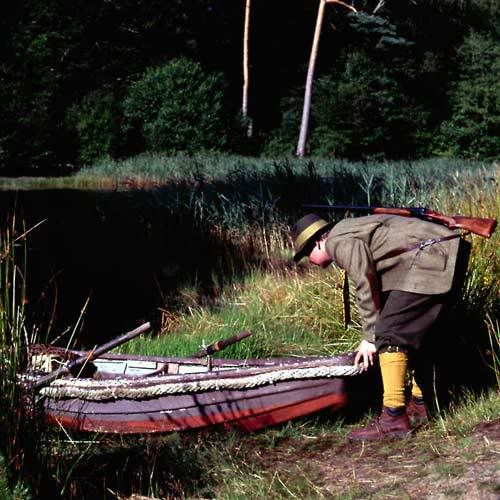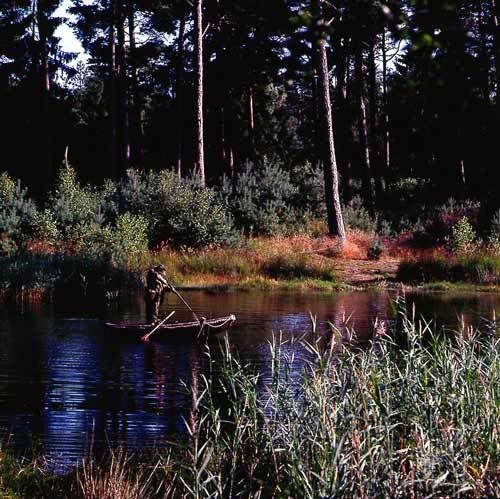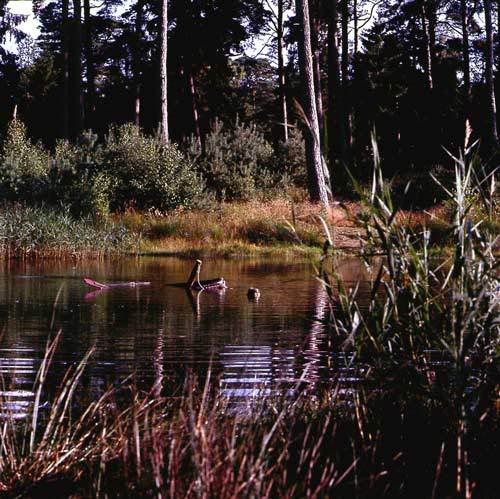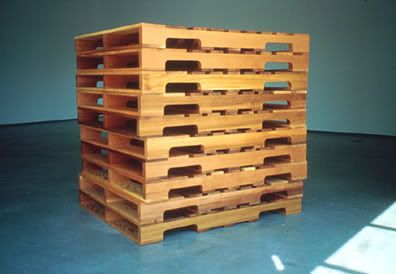
Beethoven's 6th symphony plays softly. On the screen, there's an image of a stout hunter with a rifle slung over his shoulder, with green blazer, trousers and cap. The setting is a green lakeside forest. The visual and music reveal the pastoral ideal. The hunter walks though the landscape occasionally drinking from a flask. He arrives at a small wooden boat, which he rows to the center of the lake. Then he stands and blasts a hole though the boat's bottom. The music abruptly ends with the shotgun blast. Sitting back down, the hunter waits patiently as the water rises. After several minutes the boat and hunter are submerged and all that's left is the hunter's cap, floating on the surface of the water. The screen fades to black.

This is the story told in “The Lake” a short film by Danish video artist Peter Land. Like many of Land's works this film serves as an allegory without moral statement. It is both playful and unsettling. The viewer finds it difficult to reconcile the humor of the situation with the tragic and bizarre suicide. We naturally assume that this apparently happy hunter (played by Land) is out to enjoy nature as any hunter would. The jarring suicide just doesn't fit. Land manages to suggests that beneath the veneer of a beautiful summer day lies the desperation, pain and failure of being human.

